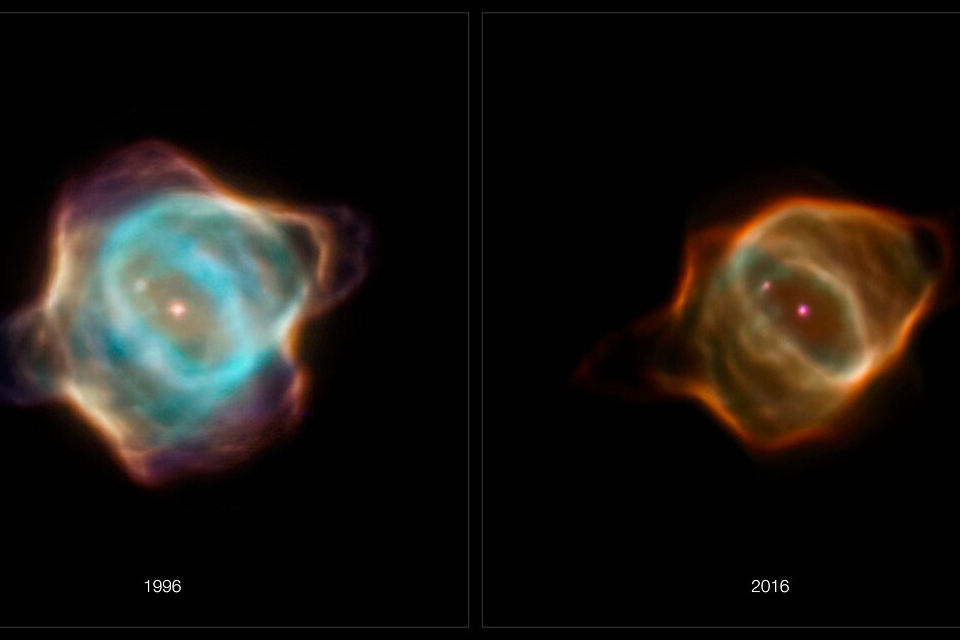These are unique images of a – by astronomical standards – lightning-fast transformation.
The universe is constantly changing. But many of those changes are extremely slow. However, Hubble has now observed a system that is transforming at lightning speed. This is the nebula Hen 3-1357 – nicknamed the Stingray Nebula – which has dimmed considerably in just two decades and has also changed shape considerably.
Unique
The nebula – which was created when a dying star found in the heart of the nebula emitted all kinds of gases – is unique, says researcher Bruce Balick. In most cases, researchers see such nebulae growing at most. “But here we see that its shape is fundamentally changing and the nebula also becomes less bright, all on an unparalleled time scale.”
The changes became apparent when researchers juxtaposed Hubble’s 1996 images of the nebula with images also taken of the nebula by Hubble in 2016. “Because Hubble is so optically stable, we are very, very sure the nebula’s brightness will change,” said researcher Martin Guerrero. “This is easy to see, because the brightness of all the other stars in the Hubble photo – including a star that accompanies the dying star at a somewhat greater distance – has remained constant.”
De nevel in 1996. Afbeelding: NASA / ESA / B. Balick (University of Washington) / M. Guerrero (Instituto de Astrofísica de Andalucía) & G. Ramos-Larios (University of Guadalajara).
–
The nickname no longer fits
What is particularly striking, of course, is that the bright blue gas rings that still hung around the star in 1996 have almost completely disappeared. The same is true of the wavy edges that previously earned the nebula the nickname Stingray Nebula. Clearly, major changes have occurred in the light emitted by the glowing gas that makes up this nebula – nitrogen, hydrogen, and oxygen. In particular, the oxygen emission has decreased sharply in terms of brightness: by a factor of almost 1000!

De nevel in 2016. Afbeelding: NASA / ESA / B. Balick (University of Washington) / M. Guerrero (Instituto de Astrofísica de Andalucía) & G. Ramos-Larios (University of Guadalajara).
–
Ster
It is still unclear why the nebula is undergoing such a rapid transformation. To answer that question, the researchers likely need to be at the dying star, which affects both the structure and brightness of the nebula.
It has been known for some time that that star is a bit peculiar. For example, researchers saw the temperature of the star rise sharply earlier, making it even ten times warmer than the surface of our own sun. It is possible to trace back to helium fusion that took place for a short time outside the core of the central star. The star then cooled quickly again. It remains to be seen whether the star – and with it the surrounding nebula – will have any more surprises in store for us in the future.
POPULAR ON SCIENTIAS.NL
Keep amazed ✨
Receive the most beautiful space photos and interesting popular science articles every Friday. Get the free Scientias Magazine together with 50,000 others.
–


